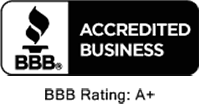Rodent Prevention and Control MN
Rats and mice are the most common and most destructive household rodents. They get into food and garbage. They chew almost anything, including electrical wiring. They go to the bathroom on just about everything they touch, their greasy fur leaves marks where it rubs, and they carry disease and disease-carrying fleas. They have no trouble getting into your house, because rats can squeeze through a half-inch gap, while mice can slip through holes just over a quarter inch wide. If your pencil can fit under the door, so can a mouse.
Rodent Control
Rodent control in and around the home remains the primary strategy in preventing hantavirus infection. Rodent infestation can be determined by direct observation of animals, or inferred by observation of their nests or feces on floors or in protected areas (e.g., closets, kitchen cabinets, drawers, wall voids, furnace and hot water heating cabinets, and behind ventilation screens), or from evidence that rodents have been gnawing on food or other objects. The interior and exterior of the home should be carefully inspected at least twice per year for any openings where rodents could enter the home and for conditions that could support rodent activity. If any evidence of rodent infestation is detected inside the home or in outbuildings, precautions should be taken. The precautions described in this report are broadly applicable to all groups of mice and rodents.
HPS in the United States
Through December 15, 2010, a total of 560 cases of hantavirus pulmonary syndrome have been reported in the United States. Of these, 529 cases occurred from 1993, onward, following identification of hantavirus pulmonary syndrome, whereas 31 cases were retrospectively identified. Thirty-six percent of all reported cases have resulted in death.
As of December 1st, 2009, of persons ill with HPS, 63% have been male, 37% female.
The mean age of confirmed case patients is 37 years (range: 6 to 83 years).
Cases have been reported in 32 states, including most of the western half of the country and some eastern states as well. Over half of the confirmed cases have been reported from areas outside the Four Corners area. About three-quarters of patients with HPS ha ve been residents of rural areas.
ve been residents of rural areas.
Total Cases: 580 (Cumulative case count per state valid as of October 19, 2011) States Cases by State of Exposure Cases by Reporting State Cases by State of Residence
Annual U.S. HPS Cases and Case-fatality, 1993-2010
The primary carrier of the HPS strain of hantavirus is the deer mouse. Although transmission is rare, HPS can prove deadly if left untreated. Symptoms include tachycardia and tachypnoea. Cardiovascular shock may occur in severe cases. Rodent control is still considered the most effective prevention of HPS.
Rodent Droppings
Rodent droppings should be handled with utmost care. Particularly after they have dried, feces can be reservoirs of a variety of dangerous diseases and viruses. These dry droppings break apart upon contact and release airborne particles that may enter your nasal passages, causing infection.
Droppings of any animal are perfect breeding grounds for bacteria and diseases, and if you are not careful it could be harmful. For instance, not wearing a mask while cleaning bat guano can be dangerous, and raccoon feces can harbor parasitic worms that can make you very ill and in rare cases, death.
Do not handle droppings in your home without first taking preventive measures. Tightly fitted facemasks and rubber gloves are highly advisable. Avoid sweeping or vacuuming the location, as this may lead to further release and dispersal of virus particles. Sanitation of affected areas with spray disinfectant is absolutely necessary.
Hantavirus Pulmonary Syndrome – United States: Updated Recommendations for Risk Reduction
Contact your local Minnesota animal control expert to discuss extermination options.
Additional Info: [PDF] Hantavirus: What is it? What can be done about it?



